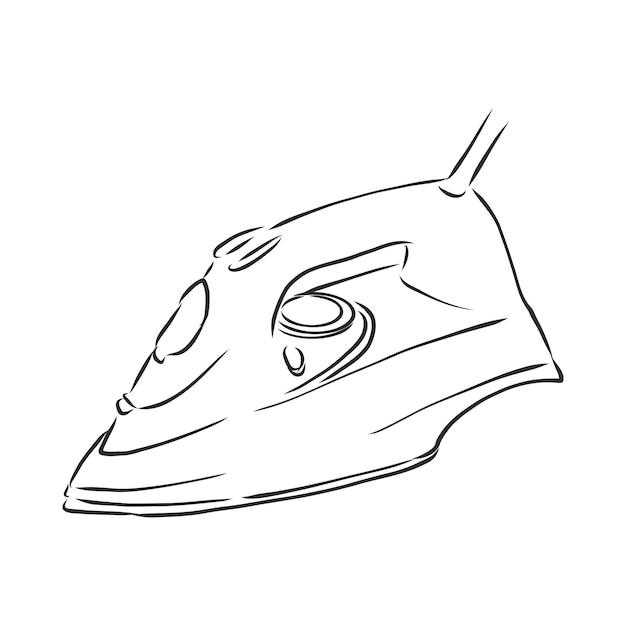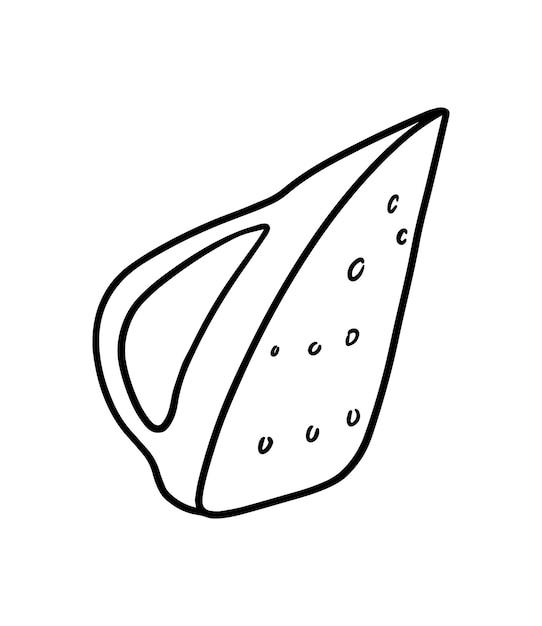In our modern world, where energy efficiency is becoming increasingly important, it’s only natural to wonder about the power consumption of our everyday appliances. One such appliance that may come to mind is the electric iron, a reliable companion in our quest for well-pressed clothing. But the burning question remains: does an iron draw a lot of electrical power?
In this blog post, we’ll delve into the world of electric irons and explore their energy usage. We’ll uncover whether an iron is energy efficient, discuss the voltage required for its operation, and examine the amount of power it consumes in a day. Additionally, we’ll compare the energy consumption of an iron to other common household appliances to give you a better understanding of its electricity usage. So, let’s dive in to discover the truth about the power-hungry nature of irons and learn how we can be more mindful of our energy consumption in the process.
Does an Iron Consume a Lot of Electricity
Many of us have experienced the frustration of standing in front of the ironing board, ready to tackle a mountain of wrinkled clothes, only to wonder, “Does this iron draw a lot of electrical power?” Well, fear not, my fellow ironers! Today, we’re going to delve into the world of irons and uncover the truth about their power consumption.
The Lowdown on Iron Power Consumption
When it comes to ironing, power is a necessity. We need our trusty iron to heat up quickly and glide effortlessly over our clothing, banishing those pesky wrinkles to oblivion. But does this mean that our beloved iron is gobbling up electricity like a hungry goblin? Not necessarily.
Modern irons are designed with energy efficiency in mind. They are equipped with advanced features such as adjustable temperature settings, automatic shut-off functions, and energy-saving modes. These innovations help to minimize power consumption and provide us with a more environmentally friendly ironing experience.
Unleashing the Power of (Watt)age
Now, let’s talk numbers. The power consumption of an iron is measured in watts. But what exactly is a watt? Well, my friends, a watt is the unit of measurement for power, and it tells us how much energy an appliance consumes per second. The higher the wattage, the more power-hungry the appliance.
In the case of irons, the wattage typically ranges from 1000 to 1800 watts. This means that when you switch on your iron, it will draw between 1000 and 1800 watts of electrical power from the outlet. However, keep in mind that this is the maximum power rating. The actual power consumed will depend on factors such as the iron’s temperature setting and the fabric being ironed.
Ironing Out the Energy-Saving Tips
Now that we know the answer to the burning question, “Does an iron draw a lot of electrical power?” it’s time to unleash some smart strategies to reduce energy consumption while still achieving wrinkle-free perfection. Here are some handy tips to help you iron out the creases in your electricity bill:
1. Choose the Right Temperature
Not all fabrics require the same amount of heat. By using the appropriate temperature setting for each garment, you can minimize both energy waste and the risk of scorching your favorite shirt. Remember, a little adjustment goes a long way!
2. Master the Art of Sorting
Sort your laundry based on the fabric type and ironing requirements. This way, you can group similar items together and reduce the time spent waiting for your iron to heat up or cool down. Efficiency and organization? What a power duo!
3. Time It Right
Speaking of efficiency, try to tackle your ironing pile all at once rather than doing small loads sporadically. This not only saves time but also reduces the number of times you need to power up that iron. Plus, you’ll feel like a superhero when you conquer that mountain of clothes!
4. Embrace the Steam Power
Utilize the steam function of your iron whenever possible. Steam helps to relax the fabric and remove wrinkles more effortlessly, reducing the time and energy required for each garment. Who knew steam could be so powerful?
5. Iron in Batches, Not Battles
Instead of ironing one piece at a time, invite your clothes to a group gathering on the ironing board. By ironing in batches, you make the most of the iron’s heat, greatly reducing the overall energy consumed. Let the clothes mingle and watch the wrinkles disappear!
So, dear readers, the truth is out: an iron doesn’t draw an excessive amount of electrical power. With modern energy-saving features and a little mindful ironing technique, you can tame those wrinkles without breaking the bank or harming the environment. Now, go forth and conquer that pile of laundry with your newfound knowledge and a touch of electricity-savvy humor!
FAQ: Does An Iron Draw A Lot Of Electrical Power
I. Is an iron energy efficient?
- Yes, modern irons are designed to be energy efficient. They typically have lower wattage and advanced heating elements that heat up quickly, saving both time and energy.
II. How often is an electric iron used?
- The frequency of using an electric iron varies from person to person. Some people may use it daily for ironing clothes, while others may use it less frequently, depending on their needs.
III. What is the voltage of an iron?
- Most household electric irons in the United States are designed to operate at the standard voltage of 120 volts.
IV. How much energy does an iron use per day?
- On average, an iron consumes around 1,000 to 1,200 watts of power per hour. If used for one hour daily, it would consume approximately 1 kilowatt-hour (kWh) of electricity per day.
V. What appliances use a lot of electricity?
- Appliances like air conditioners, electric water heaters, ovens, and clothes dryers typically consume more electricity. However, an iron, compared to these appliances, uses relatively less electricity.
VI. How many appliances can run on a 100-amp circuit?
- The number of appliances that can run on a 100-amp circuit depends on their power requirements. However, as a general rule, a 100-amp circuit can power multiple smaller appliances or a few larger appliances.
VII. How much current does an electric iron draw from a 220V source?
- An electric iron typically draws around 4 to 6 amps of current when connected to a 220-volt power source.
VIII. How do flat irons save electricity?
- Flat irons, also known as hair straighteners, have features like automatic shut-off and adjustable temperature settings, which can help save electricity. Additionally, using the right heat setting for your hair type can also reduce energy consumption.
IX. How many amps does an iron draw?
- The amperage of an electric iron generally ranges from 4 to 6 amps, depending on the model and wattage.
X. Does an electric iron use AC or DC power?
- An electric iron uses AC (alternating current) power. AC is the standard type of electrical power used in homes.
XI. Why do irons sometimes fail?
- Irons can fail for various reasons, including worn-out heating elements, faulty thermostat mechanisms, or electrical issues. Over time, wear and tear can affect the performance and reliability of an iron.
XII. How can I keep my electric bill down?
- You can keep your electric bill down by optimizing energy usage. Some tips include using energy-efficient appliances, unplugging devices when not in use, adjusting thermostat settings, and practicing energy-saving habits.
XIII. Which appliance uses more electricity, an iron, or a clothes dryer?
- A clothes dryer typically consumes much more electricity than an iron. Dryers require higher wattage and longer operation times to dry laundry effectively.
XIV. What is the lifespan of an iron?
- The lifespan of an iron can vary depending on its quality, usage, and maintenance. On average, a well-maintained iron can last between 5 to 10 years.
XV. What can cause a high electric bill?
- A high electric bill can be caused by factors such as increased energy consumption, inefficient appliances, poor insulation, leaving devices on standby, and higher electricity rates.
XVI. Does using an iron consume a significant amount of electricity?
- While an iron does consume electricity, its overall energy consumption is relatively low compared to other household appliances. Efficient usage and shorter ironing times can help further reduce energy consumption.
XVII. Which iron consumes less electricity?
- Irons with lower wattage ratings generally consume less electricity. Look for irons with energy-saving features and adjustable temperature settings for more efficient operation.
XVIII. How many watts does an iron use?
- An electric iron typically uses between 1,000 to 1,200 watts of power, although wattage can vary depending on the specific model.
XIX. How many amps does an RV water heater draw?
- The amperage of an RV water heater can vary depending on its size and power requirements. On average, RV water heaters can draw around 10 to 15 amps of current.
XX. How many amps is a microwave?
- Most household microwaves draw around 8 to 13 amps of current. However, the exact amperage can vary depending on the specific model and wattage.
XXI. What household appliance draws the most electricity?
- Among common household appliances, air conditioners and electric water heaters typically draw the most electricity due to their higher power requirements.
XXII. Which is better, a steam iron or a dry iron?
- Both steam irons and dry irons have their advantages. Steam irons are typically better suited for removing tough wrinkles, while dry irons are useful for delicate fabrics and heat-sensitive materials. The choice depends on your specific ironing needs.
XXIII. What is the voltage of an electric iron?
- Most household electric irons in the United States operate at the standard voltage of 120 volts.
XXIV. What is the best wattage for an iron?
- The best wattage for an iron can vary depending on your ironing needs. However, irons with wattage between 1,000 to 1,200 watts are generally considered suitable for most household ironing tasks.
XXV. Why are irons sometimes called SAD?
- In the past, irons were commonly referred to as “SAD irons” or “SAD irons” because they required heating by an external heat source like a stove. SAD was an acronym for “solid-air-draft,” indicating the iron’s design. However, the term is less used today as modern irons are self-heating and have evolved significantly.
Remember, using a quality iron efficiently can help you look sharp while keeping your energy bills in check.

